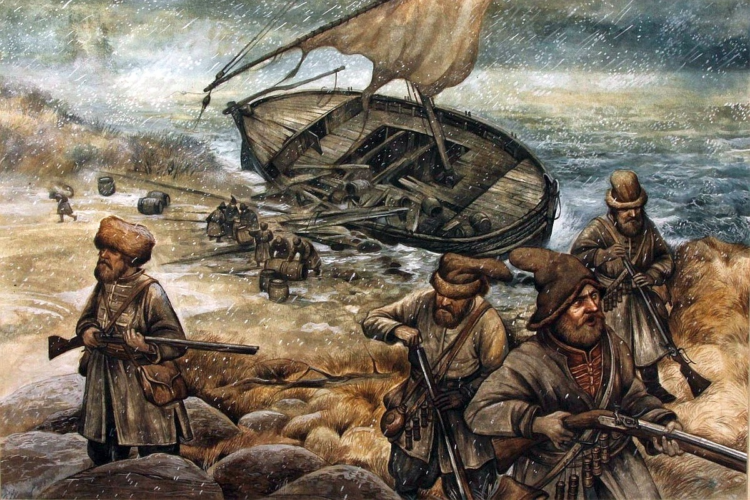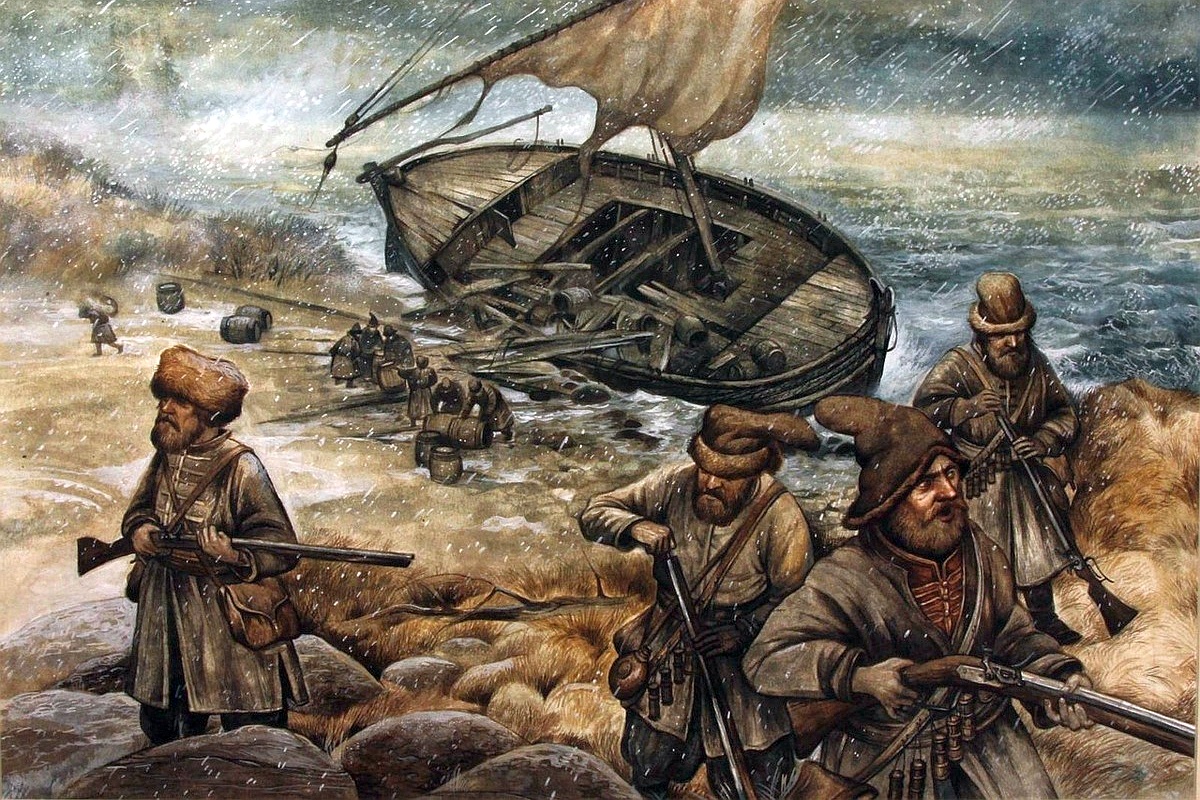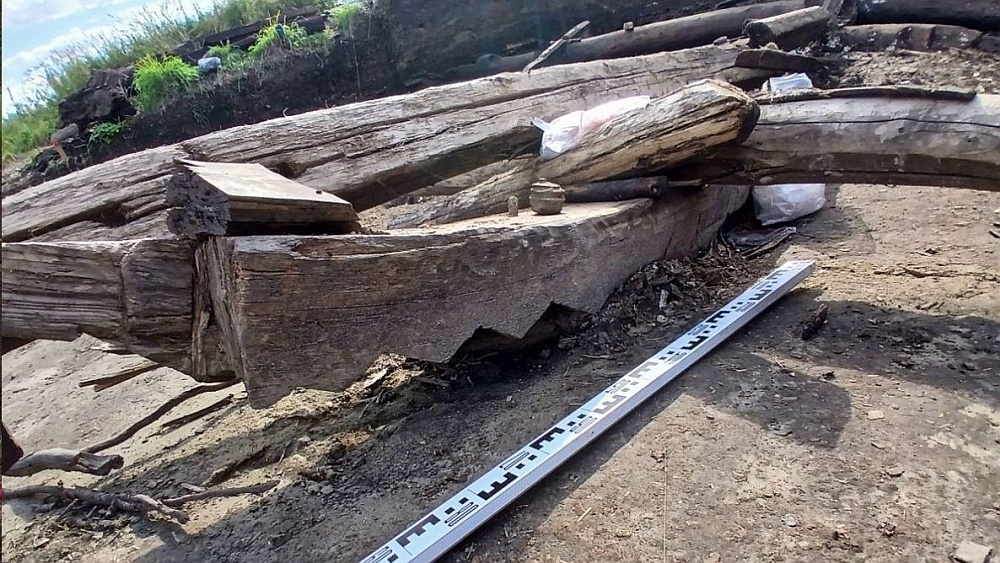Why the Pomor Kochi never returned from Mangazeya – archaeological findings
Published: by .

A lid with two-headed snakes, a "scale" coin, elements of Pomor kochi vessels, and much more were discovered during the past field season by archaeologists at the Mangazeya Settlement, a federal monument. According to the Yamalo-Nenets Autonomous Okrug government, over 1,200 artifacts were found in total. The research was conducted as part of the "Saint Protomartyr Basil of Mangazeya" grant project.

store.paulsen.ru
Mangazeya experienced a shortage of timber. The kochis that arrived here were often dismantled and used for construction. Graphics: A. Kukhterin, "The Development of Siberia" series.
The expedition team included 26 people—archaeologists, specialists, and volunteers. They spent a month exploring the 250-square-meter site. The finds included items made of wood, leather, birch bark, fabric, metal, and ceramics. The discovery of beads, ceramics, arquebus cannonballs, and "scale" coins from the time of Tsar Mikhail Feodorovich allowed researchers to determine the everyday life and trade relations in Magnazeya.
The scientists noted that the discovered lid of a bottle of anointing oil is of particular interest to the study. It is decorated with two blades depicting the heads of snakes in the form of dragons. This is a symbol of archbishops distributing oil to priests for the rite of baptism.

Excavations uncovered a large number of ship parts, including frames and planks, which were uniquely preserved. Photo: yanao.ru
This season, archaeologists studied the legendary Pomor kochi—seagoing sailing and rowing vessels. Mangazeya was entirely dependent on seaborne supplies and suffered from a shortage of timber. The kochi that arrived here were often dismantled and used for construction. During excavations, a large number of ship components were found: frames and planks, which were uniquely preserved. Scientists also discovered, for the first time, a plank from the upper part of a ship's side with traces of red paint. Previously, they had only found tarred parts. The discovery of these massive frame fragments will allow archaeologists to reconstruct the ship's hull and side structure with high precision.
Project manager Georgy Vizgalov explained that there is a high probability that the chapel of St. Basil of Mangazeya, and possibly the saint's coffin, were made from parts of the koch on which he arrived in the city with the first settlers.
Scientists plan to soon conduct a dendrochronological analysis of 25 wood samples, as well as study slag, coal, wool, seeds, fruit pits, nuts, and soil samples to more accurately date the finds.
Modern technologies were used in the study of the settlement. For the first time, a network of planned elevation data was created and laser scanning of the area was conducted to accurately record the terrain and clarify the boundaries of the monument.
Mangazeya, the first Russian town in Siberia above the Arctic Circle, was a major fur trade center in the 17th century. The fortified fort, with its wooden walls and church, was called the "Russian Klondike" due to the abundance of sables in the area. In its heyday, up to 2,000 people lived there, including the garrison and traders. After the ban on fur exports by sea and a fire in 1642, the town fell into decline, finally deserting in 1672, when its residents founded New Mangazeya. The old town has become part of local legend.
Comments